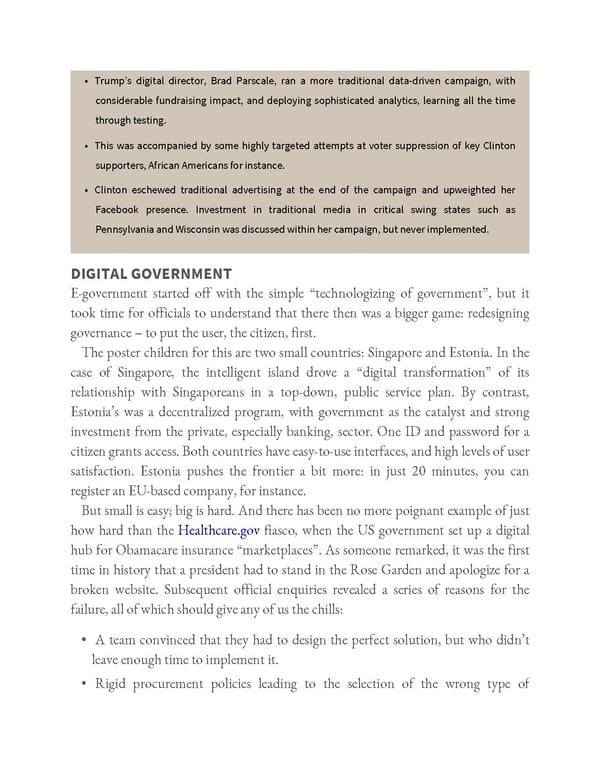• Trump’s digital director, Brad Parscale, ran a more traditional data-driven campaign, with considerable fundraising impact, and deploying sophisticated analytics, learning all the time through testing. • This was accompanied by some highly targeted attempts at voter suppression of key Clinton supporters, African Americans for instance. • Clinton eschewed traditional advertising at the end of the campaign and upweighted her Facebook presence. Investment in traditional media in critical swing states such as Pennsylvania and Wisconsin was discussed within her campaign, but never implemented. DIGITAL GOVERNMENT E-government started off with the simple “technologizing of government”, but it took time for officials to understand that there then was a bigger game: redesigning governance – to put the user, the citizen, first. The poster children for this are two small countries: Singapore and Estonia. In the case of Singapore, the intelligent island drove a “digital transformation” of its relationship with Singaporeans in a top-down, public service plan. By contrast, Estonia’s was a decentralized program, with government as the catalyst and strong investment from the private, especially banking, sector. One ID and password for a citizen grants access. Both countries have easy-to-use interfaces, and high levels of user satisfaction. Estonia pushes the frontier a bit more: in just 20 minutes, you can register an EU-based company, for instance. But small is easy; big is hard. And there has been no more poignant example of just how hard than the Healthcare.gov fiasco, when the US government set up a digital hub for Obamacare insurance “marketplaces”. As someone remarked, it was the first time in history that a president had to stand in the Rose Garden and apologize for a broken website. Subsequent official enquiries revealed a series of reasons for the failure, all of which should give any of us the chills: • A team convinced that they had to design the perfect solution, but who didn’t leave enough time to implement it. • Rigid procurement policies leading to the selection of the wrong type of
 Ogilvy on Advertising in the Digital Age Page 332 Page 334
Ogilvy on Advertising in the Digital Age Page 332 Page 334